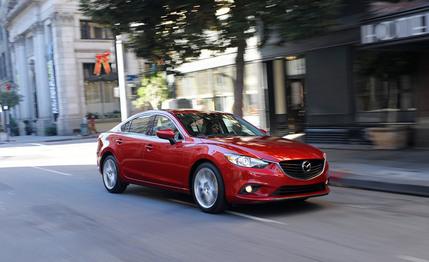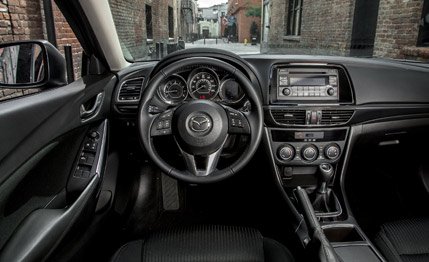
 Instrumented Test
Instrumented Test
Long limbed and slightly poisonous, the yellow sac spider (Cheiracanthium inclusum) is a North American native whose looks are as terrible as you’d expect from anything with “sac” in its name. The little creature fell hard for the previous-generation Mazda 6, and for reasons unknown outside the arachnid world, the eight-eyed webmasters started shacking up in the 6’s evaporative canister vent line at some point between the plant and dealerships, prompting the recall of 65,000 cars. However, while spiders voted with their feet for the 6, Mazda always struggled to get actual humans into the car.
On average, Toyota sold more Camrys in one month last year than Mazda 6s sold all year. That overly large, personality-deprived 6 is gone, left to the arachnids. With the introduction of the new 6, Mazda didn’t just shake the Etch A Sketch, it threw it out and started over on an iPad. The 2014 Mazda 6 is a wholesale reboot. The body, suspension, powertrain, interior, and exterior—and even the evaporative canister vent line—are all clean-sheet designs. It’s not even built in Flat Rock, Michigan, anymore. The 6 picked up its bindle and caught the next boxcar headed for Hofu, Japan.


You don’t need eight eyes to spot the 6’s new sheetmetal. Mazda tells us the new styling is informed by its “Kodo” philosophy, which endeavors to capture motion in metal. It’s hardly a unique concept, but the 6 is certainly less “meh” than the class average. We’re talking about you, Camry. The 6 looks like a premium Japanese sedan, and if Mazda hadn’t strangled in the cradle its plan to launch the Amati luxury brand 20 years ago, the new 6 could anchor its showroom nicely.


Visual trickery abounds. Pleated fenders give the illusion of width. Mazda shifted the A-pillar back nearly four inches to lengthen the hood and disguise the unflattering proportions inherent with a transversely mounted engine. Gloss-black trim, dual exhaust outlets, and chrome embellishments around the greenhouse, grille, and trunklid lend an upmarket presence, even in this, the lowliest, $21,675 Sport trim. And, should you buy this cheaper version, your thrift will remain a secret. Aside from the Sport’s 17-inch wheels and its lack of fog lights and a rear spoiler, its exterior is identical to the $30,290 Grand Touring model’s.


On the scales, the manual-transmission Sport puts up another pertinent number: 3124 pounds. That’s a startling 216 pounds less than its equivalent predecessor. Considering the weight loss, you might suspect a structure crafted from bird bones and shredded wheat. What you actually get is a stiff new unibody with straighter frame rails and additional high-strength steel.
Light in weight, but never feeling lightweight, the 6 is a solid car. Bolted to the new structure are struts up front and a multilink rear suspension. Mazda claims to have tweaked the suspension mounting points to enhance stability and lessen impact harshness. We can report that suspension crash and structural shudders are minimal on the Sport model with 17-inch wheels and 225/55R-17 all-season tires. Road noise, long a weakness for Mazda, isn’t intrusive. Even so, the sound-level meter did record 70 decibels at 70 mph. That would have made it noisiest in our recent test of the segment [“Masters of the Middle,” November 2012].